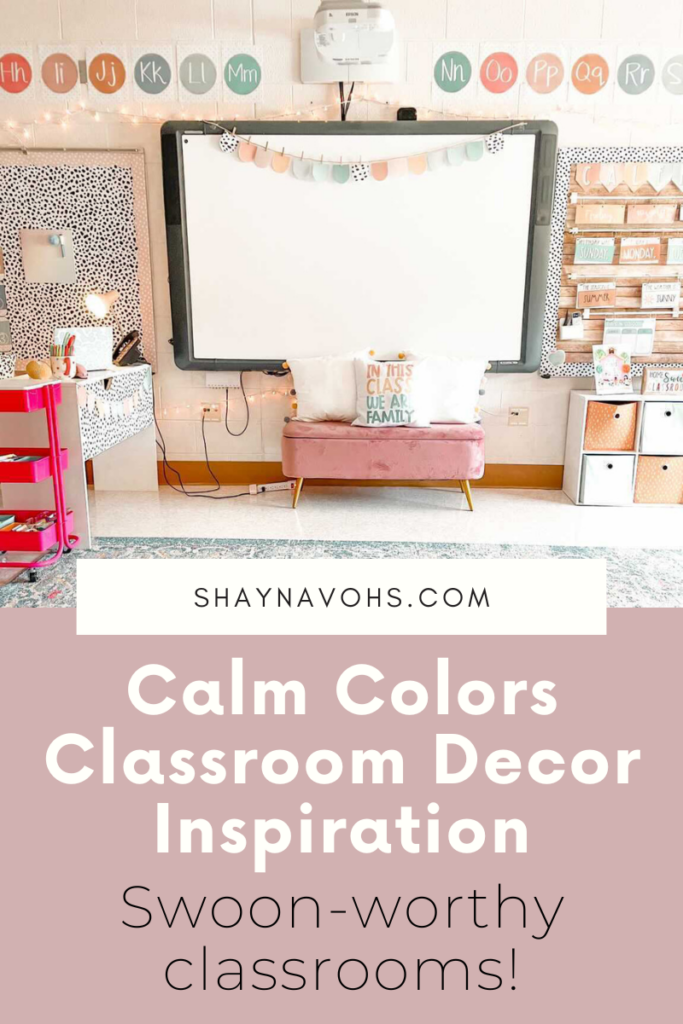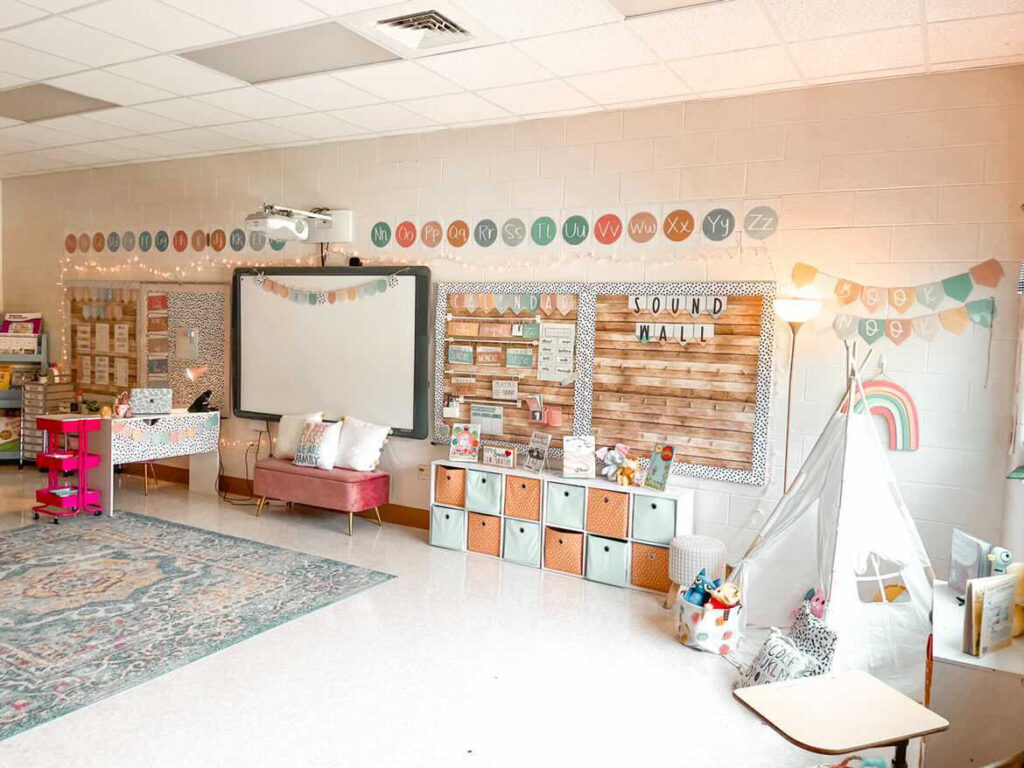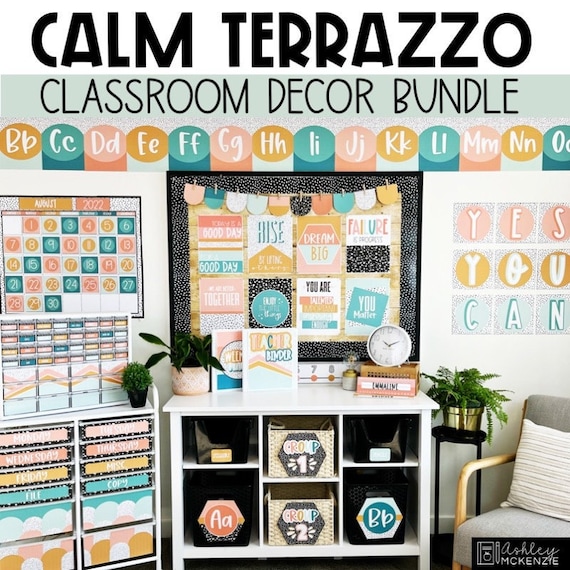In today’s fast-paced world, classrooms can often become overwhelming spaces where distractions abound and stress levels rise. However, creating a calming classroom environment can profoundly affect students’ focus, engagement, and overall well-being. In this comprehensive guide, we’ll explore various techniques, personal experiences, and practical tips to help you transform your classroom into a peaceful haven.
Understanding the Importance of Calming Classroom Decor
Classroom decor isn’t just about making the room look pretty; it plays a vital role in shaping the learning atmosphere. Studies have shown that a well-organized, visually pleasing environment can:
- Enhance student concentration
- Reduce anxiety
- Encourage positive behavior
- Support different learning styles
The Benefits of a Calming Environment
When students feel relaxed and comfortable in their surroundings, they are more likely to participate actively and retain information. Here are some of the key benefits:
| Benefits | Description |
|---|---|
| Stress Reduction | Soothing decor can minimize anxiety and create a more conducive learning environment. |
| Improved Focus | A calming atmosphere helps students concentrate better on tasks at hand. |
| Enhanced Creativity | A gentle, inspiring space can stimulate creative thinking and exploration. |
| Increased Engagement | A well-organized and inviting classroom encourages students to actively engage in learning. |
Key Elements of Calming Classroom Decor
1. Color Psychology and Classroom Color Schemes
Colors play a crucial role in influencing mood and behavior. Consider the following calming color schemes:
- Cool Blues: Promotes tranquility and reduces anxiety.
- Soft Greens: Associated with nature; it can promote relaxation.
- Pale Yellows: Adds warmth without overwhelming the senses.
Implementing these colors through paint, furnishings, and decor can create a serene environment.
2. Natural Elements: Bringing the Outdoors In
Integrating nature into your classroom can significantly enhance its calming effect. Here are some ideas:
- Plants: Incorporate low-maintenance plants like succulents or snake plants to purify the air and add greenery.
- Natural Light: Whenever possible, maximize natural light by keeping windows unobstructed and using sheer curtains.
- Natural Materials: Use wooden furniture or features made of bamboo for a more organic feel.
3. Soft Textures and Furnishings
Choosing soft textures can make your classroom feel more inviting and cozy. Consider:
- Rugged carpets or large area rugs that are easy to clean.
- Pillows and bean bags for flexible seating options.
- Curtains and drapes that soften the space and reduce noise levels.

4. Calm Visual Aids
Visual aids should serve as a source of inspiration rather than distraction. Here’s how to use them effectively:
- Limit wall art to a few key pieces that promote positive messages.
- Use soft lighting for projectors and screens to avoid harsh glares.
- Incorporate calming visuals, such as nature landscapes or abstract art, to promote relaxation.
Practical Tips for Implementing Calming Decor
Create a Plan
Before diving into decorating, create a plan:
- Assess the current state of your classroom.
- Identify areas that can be improved.
- Set a budget for your decor changes.
- Prioritize elements that will have the most significant impact.

Getting Students Involved
Involving students in the decorating process can give them a sense of ownership in their learning space. Consider:
- Organizing a classroom art project where students create calming artwork.
- Allowing students to choose colors or themes for specific areas of the classroom.
Regularly Update Your Decor
To maintain the calming effects of your classroom decor, regularly update and refresh elements based on seasons, holidays, or changing curriculum themes. This keeps the environment dynamic and engaging for students.

Pros and Cons of Calming Classroom Decor
Pros
- Promotes a peaceful and positive atmosphere.
- Supports mental well-being and reduces anxiety for students.
- Enhances participation and interest in learning.
Cons
- Initial setup costs can be higher than traditional classroom decor.
- May require ongoing updates and maintenance.
- Over-decorating can create visual clutter rather than a calming effect.

FAQs about Calming Classroom Decor
What are some budget-friendly ways to create calming decor?
Consider using DIY projects, upcycling old furniture, and utilizing free resources like online printables for posters and artwork.
How can I measure the impact of my classroom decor?
Gather feedback from students through surveys, observe changes in behavior and focus, and track academic performance over time.

Are there specific decorations that are particularly distracting?
Avoid overly bright colors, flashy patterns, and cluttered displays, as these can detract from a calming environment.
Can calming classroom decor be effective in virtual learning environments?
Absolutely! Creating a calming backdrop for video lessons with soft colors and minimal distractions can help set a positive tone for remote learning.

Conclusion: Start Your Calming Classroom Journey Today!
Creating a calming classroom environment is achievable with thoughtful planning and intentional decor choices. By focusing on color, natural elements, soft textures, and engaging students in the process, you can craft a space that not only promotes learning but also nurtures emotional well-being. Take the first step today, and watch as your classroom transforms into a sanctuary of learning and growth!